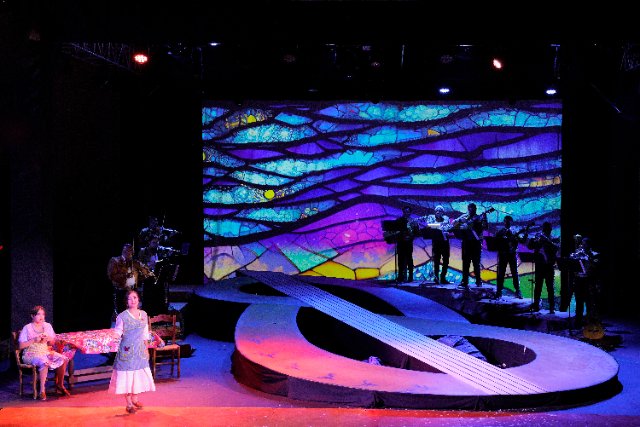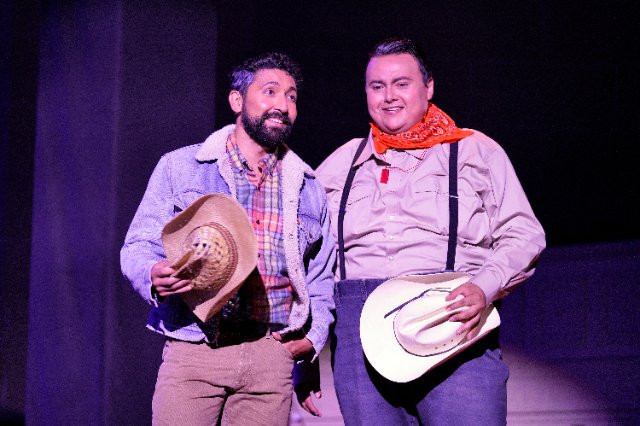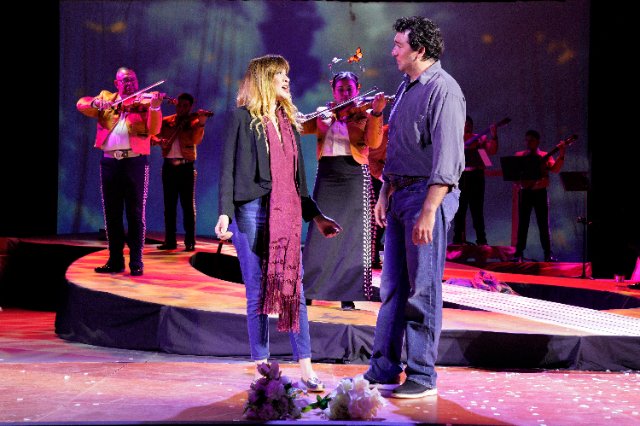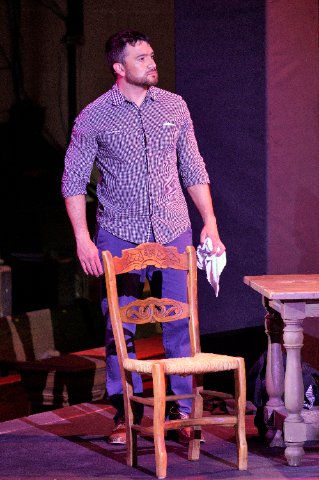Cruzar la Cara de la Luna: A Mariachi Opera
Mariachi Music Makes it to the Opera House
By: Victor Cordell - Jul 25, 2023
Few socio-political evolutions in the United States since World War II have been as profound as the growth in population from Latin American origins, from an estimated 4.5 million or 3% of the population in 1945 to over 63 million or 19% of a much larger current population. First family arrivals have crossed the border both legally and undocumented in hopes of a safer and more comfortable way of life.
While the Latinx cultures, language, religion, and music of these peoples have left their marks in most performance arts, opera stands as an exception. In 2010, composer José “Pepe” Martinez and librettist Leonard Foglia broke new ground with this piece, which translates as “to cross the face of the moon,” on a commission from Houston Grand Opera. It has proven attractive with several productions launched by mid-sized opera companies. West Edge Opera is offering a highly appealing and entertaining rendition of the work.
The story is about Laurentino, a man in New York who immigrated from Mexico half a century before. On his deathbed, he reveals an undisclosed past to his family. He had a first wife in Mexico who died in the crossing and a son who returned to his native land. Upon hearing this surprise, his Mexican-American family sets out to locate the Mexican son and reunite him with the father before the latter dies.
As is fitting, “Cruzar” está mezclado de muchas maneras (is mixed in many ways). As with musicals or operettas, conversation is spoken rather than sung, and songs stand apart with no connective musical recitatives. Although the songs are in Spanish, dialogue shifts between English and Spanish throughout, with the associated shift in supertitles. And to really keep the audience on its toes, the narrative is non-linear in time and place. That said, the storyline is easy to follow because of the cues given in the thoughtful staging.
One might expect that to cover the ground that the action does, with many brief scenes in 90 minutes, the emotional impact of the story would be compromised. It is not. The human interest elements, the life challenges, the compassionate characters, and the sadness are largely understated, yet presented in ways that trigger immediate empathetic responses in the audience. And in many ways, the tragedy of the crossings and divided families resonates even more today than when the opera debuted.
A poignant metaphor of the butterfly recurs in the music and conversation. When the butterfly emerges from its chrysalis and moves on from its life as a caterpillar, it never returns to the same location, reenacting life’s transformation in a new land. It is only the descendants that circle back to the homeland of earlier generations.
Instead of a traditional opera orchestra in a pit, the Mariachi Azteca band of guitars, violins, and trumpets plays from the periphery of the stage. The melodic music in the mariachi style always engages. Some songs are quite touching with messages particular to the immigrant experience – thoughts like “we never leave the south,” “we always want to return,” and the plea of Laurentino’s first wife Renata “I’m not marrying to receive money through the mail.”
Efraín Solis, who has played the American son in several productions, deftly heads the well-suited ensemble cast as the dying Laurentino, who dreams of the life he left behind. Other characters are well delineated from the distraught American son Mark (Bernardo Bermudez) to the surly Mexican son Rafael (Sergio González) and the spritely American granddaughter Diana (Aléxa Anderson).
Overriding and overlapping issues of interest about “Cruzar” deserve discussion. First is whether it is an opera, for which there is no definitive definition, but in the first instance, the operatic music is sophisticated and draws from “classical” idioms. This work is more like a zarzuela, a form from Spain that paralleled the development of opera in Europe, but shares the format of operettas in having spoken language interspersed with song. It might even be more closely related to the American musical, being more akin to “In the Heights” than “Carmen.”
Another key element is that with rare exception (e.g., outdoor performances and John Adams’ operas) opera vocals are never amplified, but they are in this production. One of the great virtuosities in performing arts is the astounding grandeur of an opera singer’s trained voice. The cast of “Cruzar” all have opera credibility on their resumes – for instance, Moisés Salazar who plays Chucho follows Solis as a San Francisco Opera Adler Fellow. However, it is impossible to evaluate their singing fairly compared with other opera performances when a lounge singer might sound as good using a microphone. In addition, the songs from “Cruzar” don’t challenge the power, range, or flexibility of the artists’ instruments as is common in opera. It is the high wire dynamics of the singing that produces the awe in audiences.
Apart from the matter of whether “Cruzar” is artistically suited to the opera house is the marketing issue. It is good that this work is spreading, and hopefully that will continue. But to the opera crowd, it may be largely a passing curiosity, not a trend. It would be great if this piece could bring new audiences to live performance, whether that is in the opera house or the musical theater. Perhaps the latter would be less intimidating to those without a history of attending either art form.
That raises a final question. Certainly, Latinx should be more drawn to the mariachi music and the cultural aspects of “Cruzar.” But most Latin Americans in this country will have stories of crossing, separation, and tragedy from their own families or friends. Although stories like this deserve a wide audience, the question remains whether the Latinx community wishes to relive the experiences in live performance.
“Cruzar la Cara de la Luna,” composed by José “Pepe” Martinez with libretto by José “Pepe” Martinez and Leonard Foglia and book by Leonard Foglia is produced by West Edge Opera and plays at Oakland Scottish Rite Center, 1547 Lakeside Drive, Oakland, CA through August 5, 2023.








